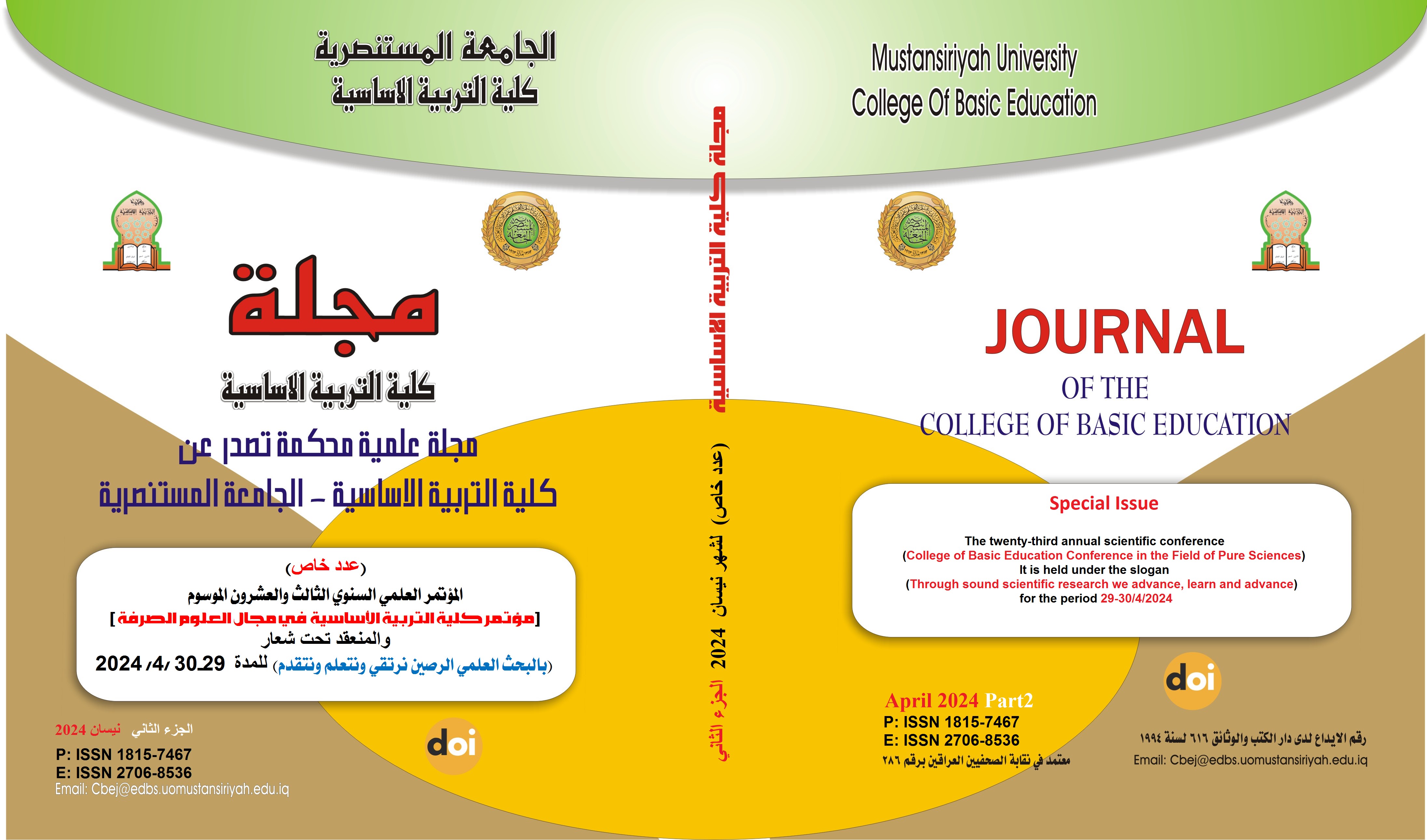The Effect Of The Strategy (List - Group - Mark) On The Acquisition Of Scientific Concepts Among Fifth-Grade Primary School Students In Science
Main Article Content
Abstract
The research aims to identify the effect of the strategy (list - group - mark) in the acquisition of scientific concepts among fifth-grade primary school students in the science subject. In light of the research objective, the researcher formulated the following null hypothesis: There is no statistically significant difference at the significance level (0.05) between the average The scores of the students in the experimental group who will study the science subject according to the strategy (list - group - mark) and the average scores of the students in the control group who will study the same subject in the usual way in the test of acquiring scientific concepts. The research population is all the students who study in the morning primary schools for boys in the governorate. Babylon/Al-Musayyab District for the academic year (2023 AD - 2024 AD), as the research sample included two groups, one of which was the experimental group and the other was the control group, so the researcher used an experimental design with partial control for two groups with a post-test, one experimental and the other control, and before starting to implement the experiment, the researcher was rewarded Between the two research groups for the purpose of obtaining accurate results with the following variables: (chronological age calculated in months, previous achievement, previous information test, Raven’s intelligence test), and after conducting equivalence, the researcher applied her research tool to the two research groups, to obtain the final results by processing that data. Statistically, using a t-test for two independent samples, the results showed that the students in the experimental group outperformed the students in the control group. According to the research results, the researcher developed a number of conclusions, recommendations, and proposals that were mentioned in the fourth chapter.
Article Details

This work is licensed under a Creative Commons Attribution-ShareAlike 4.0 International License.
